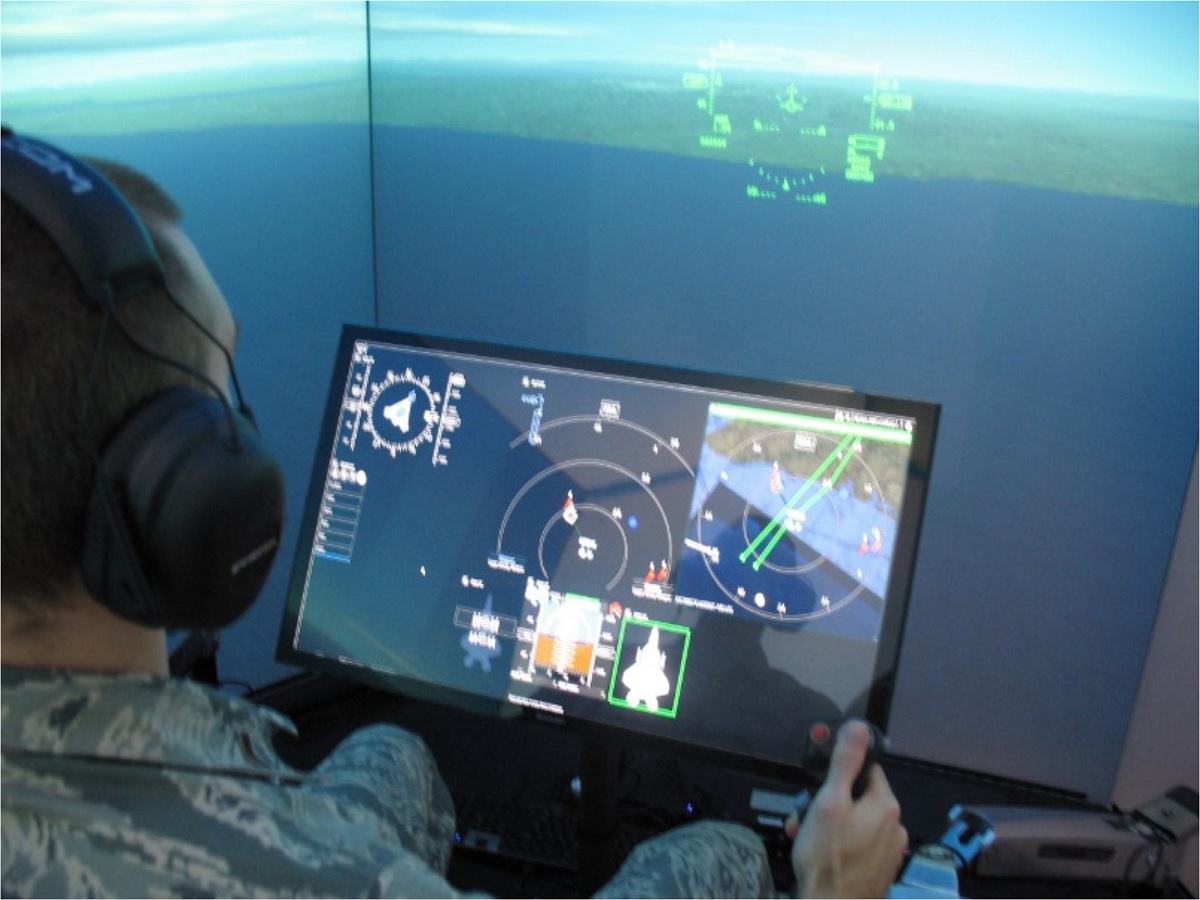A software program called Tactical Battle Manager employs intelligent agents to direct UAVs that operate as a “wingman” in manned and unmanned teams during simulated BVR air combat operations.
Together with Naval Air Systems Command (NAVAIR) and the Air Force Research Laboratory (AFRL), the Navy Center for Applied Research in Artificial Intelligence (NCARAI) at the U.S. Naval Research Laboratory (NRL) is continuing to develop the Tactical Battle Manager (TBM), a software system that employs intelligent agents to direct unmanned aerial vehicles (UAVs) that act as a “wingman” in manned/unmanned teams, in simulated beyond-visual-range (BVR) air combat missions.
To operate in highly contested environments, the TBM streamlines cross-platform coordination of manned and unmanned air combat units. It enables a human operator to control a team of UAVs by synchronizing their aims and objectives.
In these cases, the lead air vehicle is controlled by operators, who also interact with the autonomous agents, each of which is under TBM control. Each agent uses its sensors to observe its surroundings and carries out actions to accomplish its objectives. When the operator is unavailable or unexpected circumstances emerge, these agents use Goal Reasoning techniques to dynamically self-select mission objectives to pursue. This ensures competent performance (e.g., representing challenges or opportunities).
“The main idea here is if the UAV/wingman is left to its own devices, it has the ability to recognize when or how to change its goal or objective as the mission scenario unfolds,” said Dr. David W. Aha, head, of Adaptive Systems Section, NCARAI. “While some systems allow users to insert new goals or pre-program the selection of new goals, goal reasoning agents can dynamically select new goals to pursue that are not pre-programmed.”
The Analytical Framework for Simulation, Integration, and Modeling (AFSIM) from AFRL and the Next Generation Threat System from NAVAIR were combined by the NRL team (NGTS). Pilots employ AFSIM and NGTS, high-fidelity BVR mission simulators, in virtual training and testing systems on a daily basis. These simulators mimic air, ground, and surface platforms, including weapons and subsystems.
In the first human trials with AFSIM, Aha claims that expert pilots had a favorable attitude about believing the TBM could handle a UAV under their control in counter-air scenarios.
The Autonomy for Air Combat Missions project, one of five multi-service research programs on autonomy technology including NRL researchers, is financed by the Office of the Secretary of Defense and is where the TBM was developed. AFRL and NAVAIR simulate BVR air combat using NRL’s intelligent agent for managing unmanned vehicles.

Photo by MC3 Kevin J. Steinberg / U.S. Naval Research Laboratory
Source: U.S. Naval Research Laboratory

